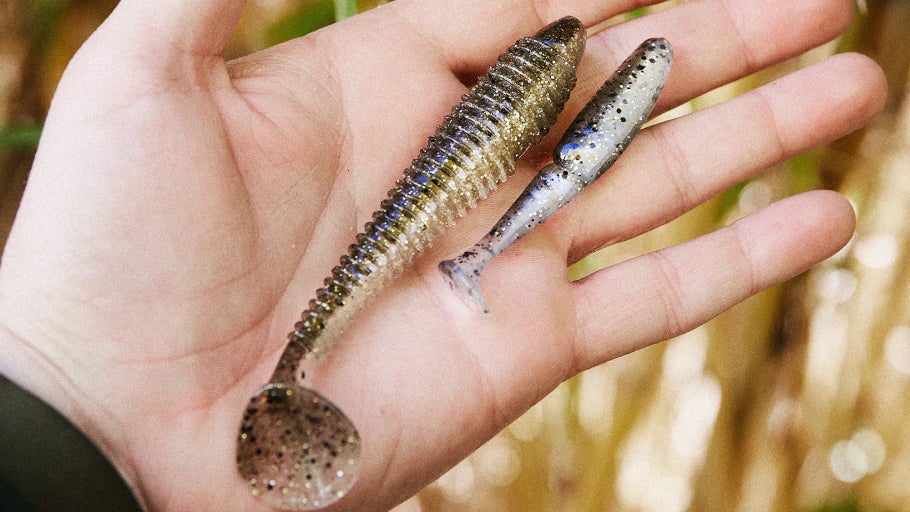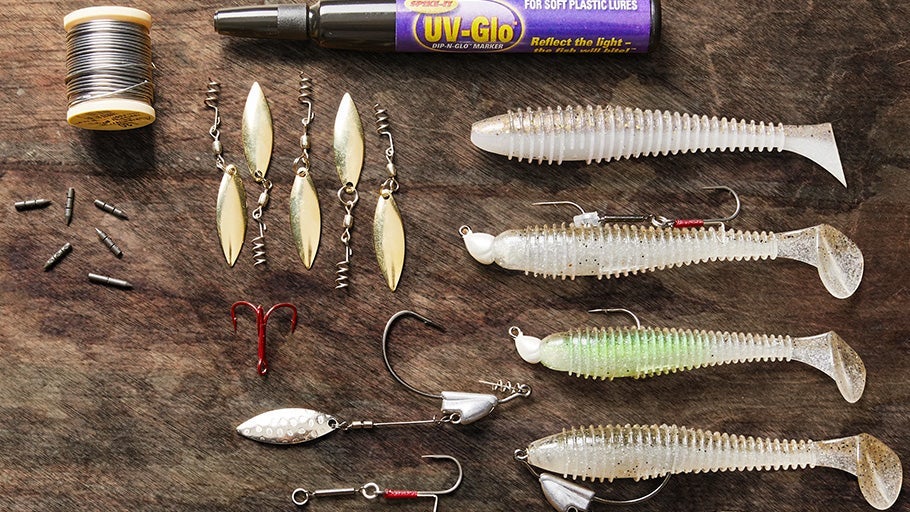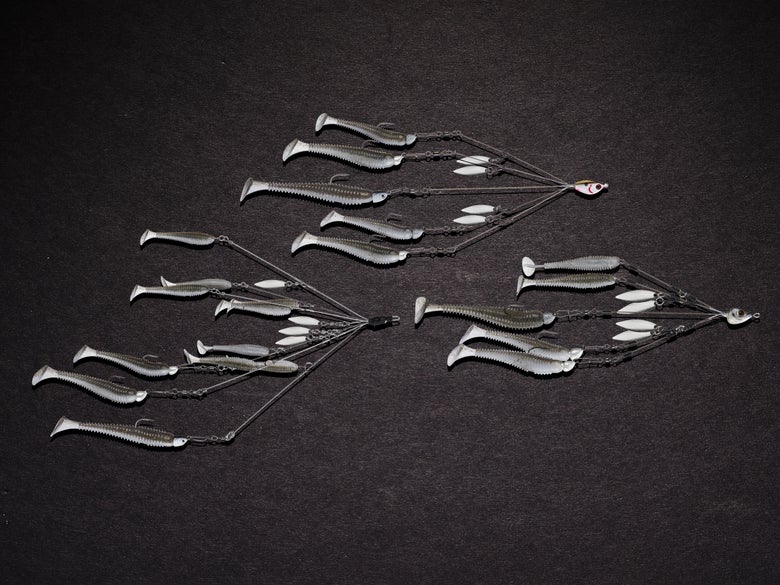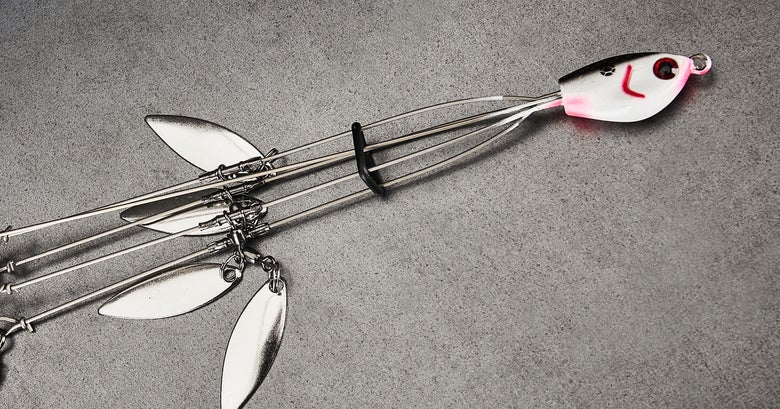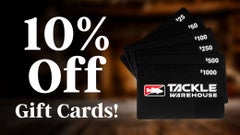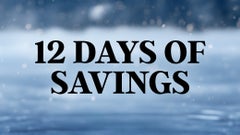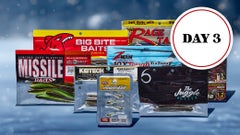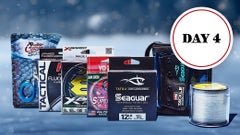
Umbrella Rigs Gear Guide
A lure that took the bass fishing world by storm after Paul Elias dominated the 2011 FLW tour event on Lake Guntersville, the umbrella rig has become one of the best ways to trigger bites from bass any time of the year. Composed of wires, jigheads, swimbaits, and a host of terminal tackle, the umbrella rig accurately mimics a school of baitfish or smaller forage and represents a substantial meal for opportunistic predators.
While bass often migrate to deeper water during the extremes of the winter and summer months, the umbrella rig bite heats up in the fall and spring as bass begin moving shallow and feeding up heavily on baitfish for the spawn and the colder months. In this article, we will go over the best setup for throwing an umbrella rig, provide modification and rigging methods, and share some tips and tricks to help improve your success on the water.
Umbrella Rig Rods
If you don’t want to spend the money to buy a specialized rod for umbrella rigs, some anglers will simply use a lighter powered swimbait rod with lure ratings that meet or exceed the size of the rig they want to throw. Umbrella rigs come in dramatically different shapes, weights, and sizes, but for most situations, a 7’6” to 8’ heavy powered rod with moderate-to-fast action will get the job done. The increased length helps with making long casts, and when combined with a heavier power rating, it gives you the muscle to move the rig and set the hooks even when fishing deep water. Full grip handles are also often preferred so you can easily position the handle under your arm and offset some of the drag created during the retrieve.
Umbrella Rig Reels
A baitcasting or round reel in the 200 – 300 size range will provide enough capacity to hold plenty of fishing line and ensure you aren’t dumping the whole spool on a long cast. Any gear ratio between 6.0:1 and 7.0:1 allows anglers to pick up line efficiently, while still providing enough cranking power to effectively fish a cumbersome rig. From the spring through the fall, faster retrieve speeds are generally more effective, while in the colder winter months, it's best to slow down and dredge the bottom when the fish are lethargic and less willing to chase. Rapidly changing weather conditions can change the mood of fish quickly, so anglers should experiment with various retrieve speeds to unlock the ideal cadence for any given day.
Umbrella Rig Line
With so many swimbaits, blades, and components coming through the water, fish are less likely to focus on your line, so if you can get away with using heavier line, do it! Typically, most anglers reach toward 20- to 25-lb fluorocarbon, with some even opting for straight braid, especially around shallow vegetation. However, if you are struggling to get bites when you think you should or have a lighter rig tied up, don’t hesitate to drop down to 12- to 17-lb fluorocarbon. Lastly, be generous with line conditioner to ensure the line flows freely off the spool and maintains its strength throughout a long day of fishing.
Modifications & Rigging
When you consider all of the wires, hardware, and swimbaits on an umbrella rig, weight can add up very quickly, so if you use heavier jigheads or big swimbaits, just be mindful that a heavy rig can wear you out over a long day of fishing. For most presentations, any 1/8-oz to 1/2-oz jighead with a 30- or 60-degree line tie is a great place to start, as the forward-angled bend allows the jig head and swimbait to engage instantly when attached to wire. Always be sure to check your local regulations regarding how many hooks you can have on your umbrella rig, as regulations vary from state to state, and you may need to use a couple of unrigged dummy heads or teasers in order to remain compliant.
Typically, a medium-sized, silver-bladed rig is a good starting point regardless of the situation, but you’ll want to keep an assortment of rig configurations on hand along with a handful of replacement blades to get dialed into the bite. If the weather is exceptionally calm or the water is clear, switching to a bladeless rig can be a good adjustment if you’re not getting bites. Changing blade color or size can also help match the conditions. Brass or gold blades will make a big difference in stained water or if fish are keyed in on something other than shad. If you want to target deeper water, switching to a smaller blade size generates less lift, keeping the rig deeper in the water column. The same holds true if you want to increase blade size to keep the rig closer to the surface.
Tips & Tricks
During the warmer months, don’t be afraid to go shallow and throw it around cover. But in the cold months, be mindful of your retrieve speed, as you may need to slow things way down to motivate lethargic fish to chase it down. Try incorporating a few sharp pumps of the reel handle during the retrieve; this flexes the wire and causes the rig to “breathe,” creating the illusion of an evading school of baitfish, triggering bass into biting.
Umbrella rigs are bulky, loaded with hooks, and known for being difficult to store, so try using a wacky worm O-ring behind the head of an umbrella rig to collapse and store them more efficiently when they are not in use. The O-ring keeps the wires contained so the rig can easily fit in a tacklebox and will not damage or hinder performance. To increase leverage when throwing a heavy umbrella rig or fighting large fish, some anglers also add a power handle to their reel for improved handling.
Colors
Natural shad patterns and small forage imitations dominate the spectrum of popular color choices, as the umbrella rig is specifically designed to mimic a small school of unsuspecting baitfish. When fishing bright blue-bird skies or gin-clear water, realistic and translucent shad colors excel when the water column floods with light, visibility improves, and the fish become more discerning. Alternatively, low-light conditions, overcast skies, and stained or dirty water may call for the use of solid color patterns that create a more defined silhouette underwater. Utilizing an assortment of similar, but not exactly the same color baits or heads can also help break up the uniformity of the rig and provide a more natural look. Also, keep a chartreuse scent marker handy so you can add a pop of color to the tails or body of your swimbaits and help fish locate your umbrella rig.
The umbrella rig is designed to imitate a universal food source that all bass love to feed on, which is why it has earned a permanent spot in the arsenal of anglers across the country and should be your go-to option anytime the fish are feeding up heavily on baitfish. Just like any effective bass fishing technique, you’ll want to continually adapt to changing conditions by experimenting with different sizes, profiles, and colors to gauge the mood of the fish on a particular day of fishing. Find the right one and you might experience some of the most aggressive bites of the whole year, and possibly multiple fish in one cast!
Related Articles

